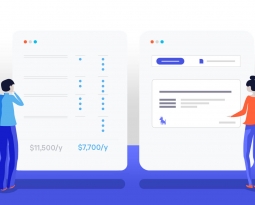
Life insurance is an investment that people neglect
Life insurance is an investment that people neglect
42% of the US population DO NOT have Life Insurance
The reasons for that are many, including:
- Thinking it’s not affordable.
- Making other things a higher priority—like eating out at fancy restaurants once a week or music downloads.
- Feeling uneasy thinking about death.
- Not realizing how much their families might struggle financially if they were no longer around to help make ends meet.
That last bullet point, in particular, is ultimately what life insurance is all about. Would your loved ones be able to pay their bills and live a comfortable life if you passed away and your paycheck was no longer there to help support them?
Maybe? Maybe not? Something everyone to Consider
Use my TREK worksheet at the end of this blog will help to determine if you have the appropriate amount of life insurance. All families are different along different demographics with different household income, dependent ages, savings, retirement and debit or loans.
Things to consider when determining life insurance:
Income
Expenses
Assets
Before buying any insurance products, you should consult with a qualified insurance professional at TREK for a more thorough analysis of your needs.
What’s really scary is 26 percent of Americans have no emergency savings. If you’re one of them, it’s not hard to imagine that your family would have a difficult time taking care of all their financial obligations after you’re gone. Of course, we can’t ignore the fact that life insurance does cost something. Yes, you will need to pay premiums and that may mean making some minor adjustments to your budget. The good news is life insurance is probably less costly than you may believe. Below is an example of a rate with the following typically 45-year-old.
Sample Premium: Healthy, 45-year-old Male
Term: 10 Years
Face amount: $500,000
Premium: $18.00 per month
Term Life Insurance in particular offers coverage that you might find surprisingly affordable. Term life policies give you flexibility options in both the amount of coverage you can get and for the amount of time (the “term”) that coverage will be in effect. Typically, terms are 10, 15, 20, 25, or 30 years. You can even get policies for as short as one year or five years. The shorter the term, the lower the premium. Along with these term polices, I would like to bring up two main features. 1) You can convert the term policy into universal whole life policy or if you were so unfortunate, 2) you can take an accelerated death benefit (80% of the face amount) as long as you qualify under certain situations. Typically, someone with less than 6 months to live with a terminal illness, thus a living benefit. Some life insurance companies or agents will exclude this coverage rider. At TREK we include these additional benefits within the life insurance policy you buy. Each and every time, with no rate impact.
Calculate Your Needs with the TREK Life Insurance Worksheet:
TREK Life Insurance Needs Worksheet
Household Income:
- Total annual income your family would need if you died tonight?
- What your family needs, before taxes, to maintain its current standard of living $——————–
- Annual income your family would receive from other sources
- For example, spouse’s earnings or a fixed pension (Do not include income earned on your assets here) $——————–
- Income to be replaced
- Subtract line 2 from line 1 $——————–
- Capital needed for income
- Multiply line 3 by appropriate factor in Table A. $——————–
| Table A | |
| Years Income Needed | Factor |
| 10 | 8.8 |
| 15 | 12.4 |
| 20 | 15.4 |
| 25 | 18.1 |
| 30 | 20.4 |
| 35 | 22.4 |
| 40 | 24.1 |
Expenses
- Funeral and other final expenses
- Typically, the greater of $15,000 or 4% of your estate $——————-
- Mortgage and other outstanding debits
- Include mortgage balance, credit card balance, car loans, etc $——————-
- Capital needed for college
- (2007 – 2008 average 4-year cost: Private $146,210; Public $61,499)2
Estimated 4-Year Cost Factor in Table B NPV*
Child 1 ___________________________ x _________________________ = __________________
Child 2 ___________________________ x _________________________ = __________________
Child 3 ___________________________ x _________________________ = __________________
| Table B | |
| Years before College | Factor |
| 5 | 0.95 |
| 10 | 0.91 |
| 15 | 0.86 |
| 20 | 0.82 |
- Total capital required
- Add items 4, 5, 6 and 7 $——————-
Assets
- Savings and investments
- Bank accounts, money market, stocks, bonds, mutual fund, annuities, etc. $——————-
- Retirement savings that can be used for non-retirement expenses
- IRAs, 401(k)s, SEP plans, SIMPLE IRA plans, Keoghs, pension and profit sharing plans3 $——————-
- Present amount of life insurance
- Including group insurance as well as insurance purchased on your own $——————-
- Total income producing assets
- Add lines 9, 10 and 11 $——————–
- Life insurance needed
- Subtract line 12 from line 8 $——————-
1 Social Security benefits, which may be available, have not been factored into this calculation.
2 Trends in College Pricing, 2014, The College Board. Costs reflect total charges, which include tuition, fees, room and board.
3 Distributions from most retirement savings plans are subject to ordinary income tax rates.
*Please Note: These tables help you determine the Net Present Value (NPV), the amount of capital required today to satisfy future income or college cost needs, given an assumed investment return of 6%, inflation of 3% for living costs and 5% for college costs








